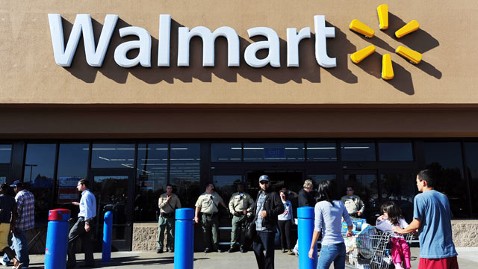How Walmart Plans to Bring Back ‘Made in America’
What Walmart sees is a way to lower costs while smoothing its supply cycle by looking more broadly at its distribution system. Although the company may be able to buy an item cheaper from China, the price it pays per piece doesn’t always reflect what it spends to get the product to the shelves. “When we buy from overseas, we may buy more than we need to fill the container,” says Mac Naughton. “We’re looking at carrying costs through the system in addition to landed costs.” (Walmart has recently been criticized for being out of stock on items, due to a lack of store employees, but the company says its in-stock position is at record levels and that it hasn’t cut employee hours.)
Walmart is also hitting some unexpected supply snags as local demand increases in the developing countries where it buys goods. Recently, it found itself short of memory foam for mattress toppers and had to add a U.S. supplier, Sleep Studio, to augment its foreign source. That need to increase capacity can only increase as the middle class grows in India, China and elsewhere. The company will still likely rely on foreign suppliers for those products, such as cut-and-sew garments, that have a very high labor input. But given the more robust regulatory environment in the U.S., domestic suppliers are far less likely to run shoddy plants that endanger workers, as some of Walmart’s overseas subcontracters have been accused of doing.
Which suppliers stand to benefit from Walmart’s strategy? The company says that products with a “high cube” (supply-chain speak for big and/or bulky, such as furniture) are candidates. So are products that have more highly-automated production, meaning lower direct labor, or products that have a less predictable sales curves and might have to be produced quickly to meet a sharp rise in demand. The company says items such as sporting goods, storage products, games and paper products are likely categories.
One of the first companies to benefit is 1888 Mills in Griffin, Georgia, which makes better-quality towels. Walmart’s version will be labeled “Made Here.” 1888 Mills had some spare manufacturing capacity, but since the size of Walmart’s orders can distort any vendor’s production, 1888 Mills needed a longer-term deal to be able to make the investment required to produce the needed quantities. “We made a commitment that was longer term than we would normally do. There’s transparency on the part of both parties: we worked with collaboratively with them,” says Michelle Gloeckler, Walmart’s senior vice president of home.
Camping, throwing knives and outdoor goods company Coleman is another participant. The firm, owned by Jarden Corp. is manufacturing its hard-sided coolers and personal flotation devices in the U.S., adding 160 jobs according to Walmart. Jarden, whose brands range from Quickie mops to K2 skis, has been ahead of Walmart on domestic manufacturing. Jarden has been on a reshoring kick for about two years.
Some of Walmart’s vendors will get a chuckle out of the idea that Walmart is willing to become more transparent. Walmart has a reputation for getting vendors into its buying rooms and beating the hell out of them on price, essentially leaving them with little margin. But Mac Naughton says that Walmart has to start thinking longer term, rather than season-to-season and that this kind of collaboration will reduce costs for both parties over time, paving the way for lower prices for consumers. For instance, a U.S. manufacturer can bypass Walmart’s distribution centers and deliver directly to stores, so-called “no touch” distribution.
Although $50 billion is a lot of goods, it’s about 10% of what Walmart will sell this year at retail. The company says the $50 billion is just a starting point, and that if other retailers joined the party the figure could be much, much higher, perhaps $500 billion. Walmart’s U.S. president, Bill Simon, suggested in a speech to fellow retailers that the power of their order books can help reshore U.S. production in textiles, furniture, pet supplies, some outdoor categories, and higher end appliances.
This isn’t Walmart’s first crack at a Made in America program. An earlier one fizzled, amid some bad publicity, because Walmart couldn’t get enough low-priced merchandise to sell. Americans may love their country, but they will buy Chinese if the price differential is too high. This time Walmart says consumers won’t have to pay up to buy domestic. “I hope the American consumer values this and we’ll make it easy for them,” says Mac Naughton. If not, consumers won’t make it easy for Walmart.




Leave a Reply
Want to join the discussion?Feel free to contribute!